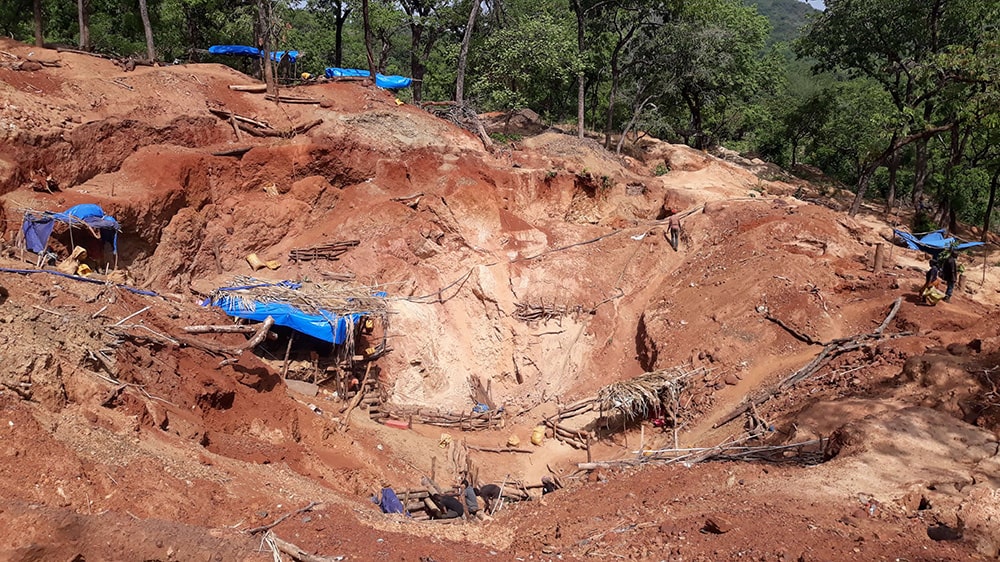Sanu Gold defines extensive gold anomalies at Bantabaye, Guinea

Sanu Gold Corp. [SANU-CSE] has noted the presence of extensive gold anomalies from systematic termite mound sampling at its Bantabaye gold exploration permit in Guinea, West Africa. The permit is located 50 km south of the multimillion-ounce Lefa gold mine.
Highlights include a total of 5,460 termite mound samples were collected at Bantabaye, with results defining 10 gold anomalies and individual targets extending up to four km in strike length.
Termite mound sampling returned up to two grams of gold per tonne. Gold mineralization is coincident with a thrust fault and shear zone system interpreted from field mapping and available regional imagery. To build their colonies, in addition to carrying millions of tiny pieces of soil to surface that build up into large mounds, termites also carry up tiny bits of gold that make termite mound sampling an effective exploration tool.
Field mapping and the review of geochemical results from a 5,460-sample termite mound sampling program have defined a total of 10 gold anomalies, each trending one to three km in strike length. The program covered the entire 99.9-km2 permit with an east-west-oriented grid with 200-metre-by-50-metre to 400-metre-by-50-metre line spacing.
Laboratory analysis of samples from the program returned multiple gold values greater than 0.5 g/t gold. The termite mound gold anomalies are coincident with geological structures identified from field mapping.
Results from the program led to the discovery of a system of east-west-oriented anomalous zones spatially associated with a complex system of west- to west-northwest-striking thrust faults and fold structures that deformed metavolcanoclastic rocks intruded by altered felsic and mafic intrusive rocks. Results also show the occurrence of a parallel system of north-northeast- and north-northwest-trending strong gold lineaments associated with a system of north-northeast- and north-northwest-trending strike-slip fault systems, fracturing the sedimentary and volcanoclastic rocks.
The gold anomalies align with the regional north-northeast- and north-northwest-striking faults and the west- to west-northwest-striking thrust faults that transect the metasediments and metavolcanics visible on regional geological and geophysical maps and images.
The company is nearing completion on over an 11,000-metre auger drill sampling program on the permit. Auger drilling provides a fast and cost-effective tool to systematically sample the weathered bedrock beneath the extensive laterite cover, which ranges in thickness from 10 to 20 metre. Systematic auger follow-up will be used to define the mineralized structures underneath the extensive laterite cover. Significant trends and anomalies defined by auger drilling will be further tested with RC and/or diamond drilling.
Located within the world-class Siguiri basin, host to several operating mines, Sanu Gold is exploring three high-quality gold exploration permits in Guinea, West Africa, targeting multimillion-ounce gold discoveries. The company has defined multi-kilometre-scale gold-bearing structures on each of the gold exploration permits, with multiple high-value drill targets. Sanu Gold is operated by a highly experienced team with successful records of discovery, resource development and mine permitting.
